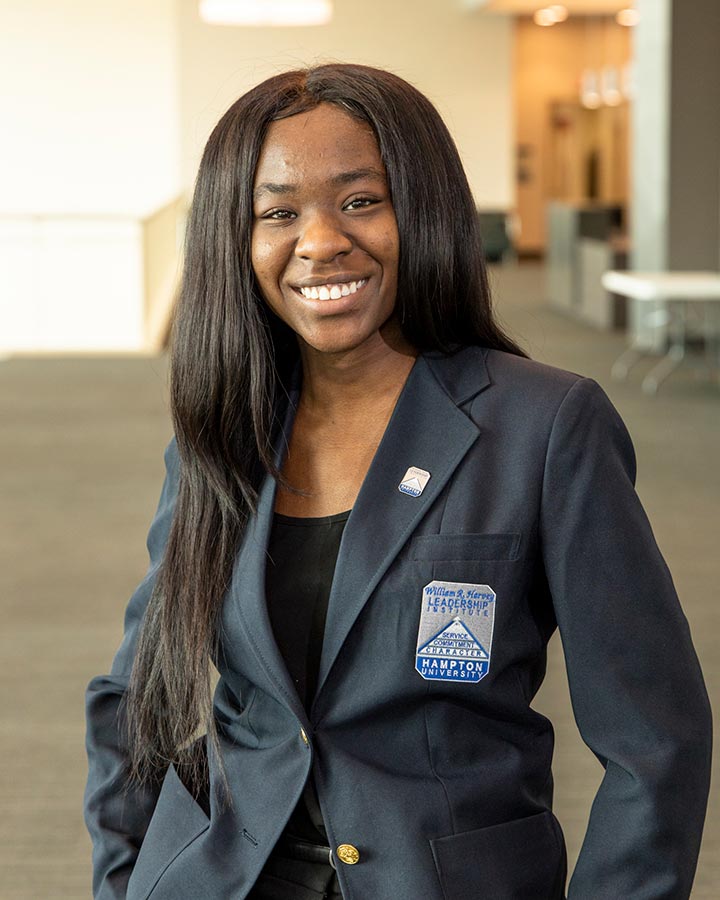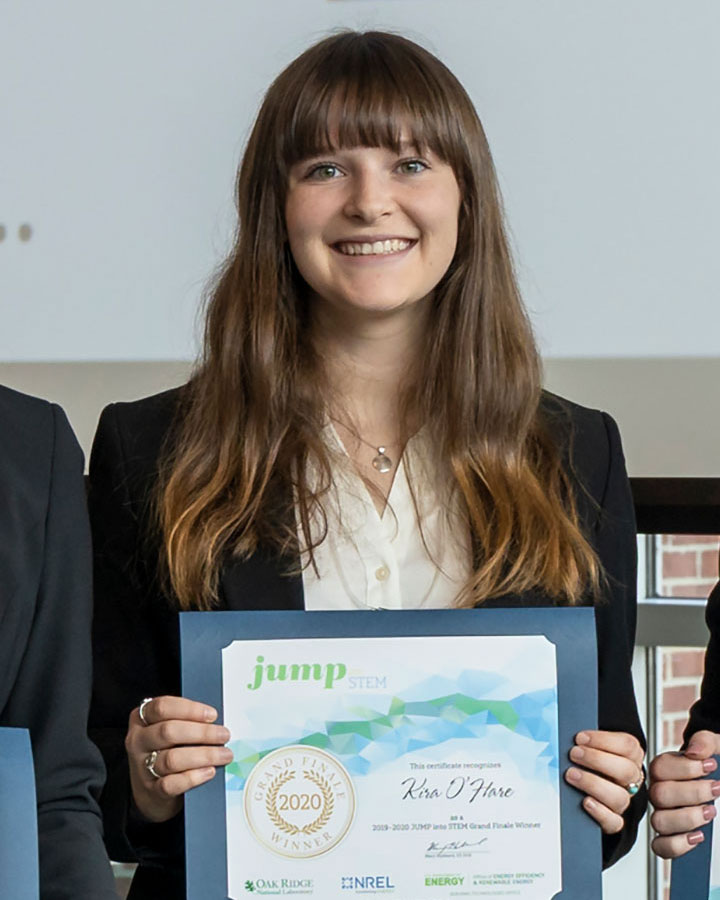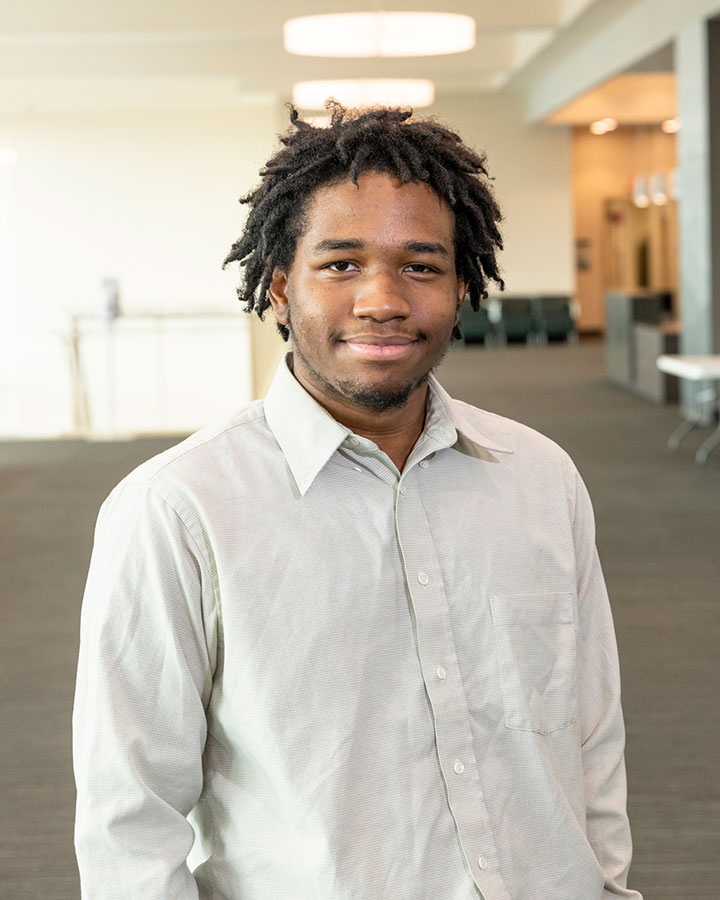Winners of 2020 JUMP into STEM Take Virtual Internships in Stride; Contribute to Building Science Research
The U.S. Department of Energy's (DOE's) JUMP into STEM competition encourages students with a passion for science, technology, engineering, and math (STEM) to share solutions for several challenges facing the building science industry. JUMP provides a platform for students to use their unique problem-solving skills and ideas to develop holistic solutions. Winners are awarded paid, 10-week summer internships at the National Renewable Energy Laboratory (NREL) or Oak Ridge National Laboratory (ORNL).
In February, 2020 winners Jai Huntley, Kira O'Hare, and James Whitfield were looking forward to spending 10 summer weeks in Colorado doing research at NREL. Their mentors were identifying tasks that would provide a learning opportunity to make a real contribution to building science research projects. Huntley, O'Hare, and Whitfield were three of the more than 200 student interns that NREL planned to welcome for the summer.
Undaunted by the shift of JUMP into STEM's summer internship programs to a virtual experience, NREL staff members were committed to providing a meaningful virtual opportunity for interns. The students were committed to learning about building technologies and contributing to their assigned research projects.
An electrical engineering major at Hampton University, Huntley worked with the Building Energy Science Research Group at NREL. Her mentor was research engineer Grant Wheeler. Huntley studied how buildings play a major role in the management of the future grid. Commercial buildings have numerous components capable of adjusting load to match demand in variable generation. When integrated through a data acquisition system, these components can provide load flexibility. Huntley was tasked with researching and developing a method to combine multiple data sets of differing time steps into one synchronized data set. Along with developing a methodology, Huntley developed useful networking skills.

My internship was more of a technical internship, but I was able to learn both technical and non-technical insights to take with me into the rest of this year. The technical lessons came when I sought help with my code. I learned about MATLAB's live editor, how functions utilized in MATLAB compare to that of other coding languages like R and Python, as well as how to create modular code.
The non-technical lessons came randomly during my morning meetings with my mentor, Grant Wheeler, in conversations that led to book suggestions, video suggestions, and career/graduate advice. Grant is a huge advocate of networking, so he suggested I connect with many staff in the Building Energy Science Group as well as others. Each of these individuals have taken their own route to get to where they are today, so it was interesting to learn how their values coincide with their current careers. These conversations provided insights into my future career, the roles that are a best fit for me, and how I will utilize my free time this upcoming school year.”
Huntley improved the data acquisition system for the Commercial Buildings Research Infrastructure during her internship. As her mentor noted: "Jai's MATLAB code will be used to integrate the various data streams for many DOE- and industry-funded projects. This was a great experience for me as a mentor made easier by Jai's passion to solve tough challenges and her ability to work independently even as a remote intern. I look forward to seeing her future career path, which will hopefully be somewhere in STEM."
Kira O'Hare: Estimating Market Potential of Thermal Energy Storage
An industrial engineering student at Georgia Institute of Technology, O'Hare joined the Community and Urban Science Research Group at NREL. Her mentor was research engineer Matthew Dahlhausen. O'Hare learned about the potential for commercial building thermal energy storage to allow buildings to shift when they use energy. Load shifting provides the electric grid with flexibility to better incorporate renewable energy production and lower energy costs. O'Hare researched the potential for thermal energy storage in various types of commercial buildings. She also gained insights into how her engineering skills could be applied to future career options.

This internship was my first short-term career success, as I was exposed to a high-tech lab environment where I could use my data analysis skills to work with large amounts of thermal load data to produce effective metrics and visuals that would be useful for making future policy and R&D investment decisions. This work quickly taught me the ins and outs of the energy sector by identifying problems that I would be interested in solving, such as creating a grid that is more flexible, reliable, and cheaper for energy consumers. This internship was a defining moment for me because I witnessed how the skills I learned in industrial engineering could manifest in a sustainability-oriented field of work going forward. I'm now inspired to continue exploring career options where I can provide data insights to issues in sustainability.”
O'Hare's work made an important contribution to the team. As her mentor explained, "Kira used DOE's ComStock, developed by NREL, a model of the U.S. commercial building stock, to estimate the market potential for behind-the-meter thermal energy storage. This analysis is instrumental in determining performance characteristics for thermal energy storage research and development."
James Whitfield: Managing Residential Energy Use and Cost with foresee™
A computer science and software engineering student at Clark Atlanta University, Whitfield worked with the Residential Buildings Research Group at NREL. His mentor was software engineer Rajendra Adhikari. Whitfield learned about foresee™, a secure home-automation system that coordinates the operation of connected appliances, home batteries, and rooftop solar. Providing a coordinated automation system satisfies homeowner preferences along with utility grid needs. Whitfield was tasked with creating software that will run on a Raspberry Pi to act as the gateway device between foresee and the smart devices within a household. As he was developing, implementing, and documenting his gateway software, Whitfield also gained insights into his preferred career.

This internship has solidified my belief that software engineering is the field I want to pursue as I continue my college education. It has been especially helpful by providing me the experience of working on a small part of a larger software project handled by many team members. The larger software projects I have worked on involved myself and maybe one other team member, so this internship has taught me to adapt to preexisting coding styles and architectures. I would love to work on more projects like the gateway device throughout my career, as it engaged my interest in both energy efficiency and network communication.
JUMP into STEM has given me an invaluable experience regardless of where my career as a software engineer takes me, and I am very grateful for the opportunity to be a part of the foresee project.”
Whitfield successfully developed a software component that allows foresee to communicate over the internet and securely access smart home devices. As his mentor added, "James solved several technical challenges to write the gateway software, which will be crucial in the upcoming field deployment of foresee."
Behind the Scenes—Making It All Possible
While Huntley, O'Hare, and Whitfield took the unexpected move to virtual internships in stride, they were supported every step of the way by their mentors and a largely unseen effort that began months before the internship start date in June.
"A strong, coordinated effort across the lab helped modify the planned on-site summer 2020 JUMP into STEM internships to fully remote assignments," said Jahi Simbai, NREL workforce development manager. "From shipping laptops, developing an online orientation program, delivering virtual professional development and social engagement sessions, and sharing resources for remote mentoring, NREL came together to provide virtual opportunities for more than 200 summer interns. We are extremely proud of the work the JUMP into STEM interns completed this summer."
The internships ended in August, but their experiences will last a lifetime. Learn more about future JUMP into STEM opportunities.
Last Updated May 28, 2025
